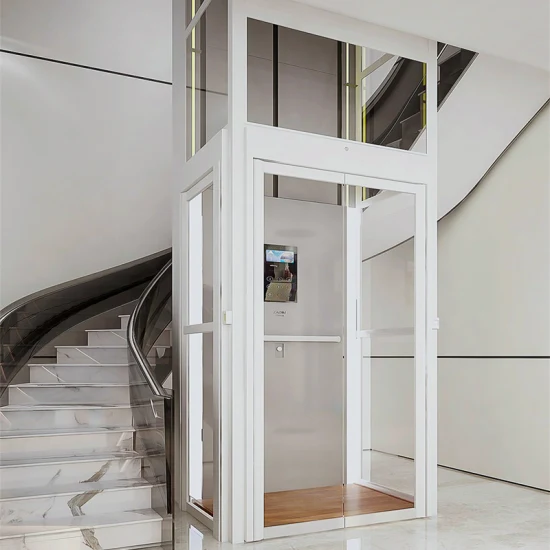London Lift Company: Offering Comprehensive Lift Solutions Across the Capital
London Lift Company: Offering Comprehensive Lift Solutions Across the Capital
Blog Article
Digging Into the World of Lifts: Typical Issues Encountered by Different Lift Mechanisms
As we browse with the upright transportation systems of modern structures, elevators attract attention as an indispensable part of our day-to-days live. Nonetheless, behind their seamless procedure lies a globe of complex mechanisms that can occasionally experience challenges. From hydraulic elevators to grip systems and machine-room-less styles, each lift kind includes its collection of common concerns. Understanding these obstacles is essential for making certain the smooth functioning of these essential systems. Let's discover the complexities that underlie the procedure of lifts and the prospective concerns that can arise, clarifying the intricate web of lift devices.
Hydraulic Elevators
Hydraulic elevators, usually liked for low-rise buildings, use fluid pressure to manage the motion of the lift automobile (lift repair companies). This device entails a hydraulic pump pushing oil into a cylinder, triggering the lift to relocate the desired direction. While hydraulic elevators are understood for their silent and smooth procedure, they do come with their own set of common concerns
One widespread problem with hydraulic elevators is oil leakage. The seals in the hydraulic system can wear out gradually, causing oil infiltration. If left unaddressed, this not only creates a mess but can also impact the lift's performance. Additionally, issues with the control system, such as defective valves or a malfunctioning pump, can trigger interruptions in the elevator's movement.
Regular upkeep and punctual fixings are important to make certain the smooth performance of hydraulic lifts. By resolving these usual concerns proactively, building owners can minimize downtime and ensure the safety and security and performance of their upright transportation system.
Traction Lifts
When taking into consideration vertical transportation systems in structures, an additional typical type besides hydraulic lifts is the traction elevator. Traction elevators run making use of a system of ropes and counterweights that move the lift auto by clutching onto the hoist ropes. This mechanism enables smoother and faster upright transport contrasted to hydraulic systems.
Among the typical problems dealt with by traction elevators is rope wear. The constant motion of the ropes within the traction system can bring about tear and put on in time, possibly triggering the elevator to breakdown or come to be dangerous for use. Routine assessments and maintenance of the ropes are necessary to guarantee the lift's correct functioning and safety.
An additional concern that grip lifts might run into is connected to the control system. Troubles with the control system can result in issues such as erratic motion, delays in action times, and even total closures. Regular testing and upkeep of the control system are important to protect against such issues and make certain the elevator's dependability.
Machine-Room-Less (MRL) Lifts

Among the crucial components of MRL lifts is the small gearless traction equipment that is set up within the hoistway. This device successfully drives the lift vehicle without the need for cumbersome devices located in standard traction lifts. Furthermore, MRL elevators commonly utilize a counterweight system to stabilize the cars and truck, further boosting their energy performance.
In spite of their benefits, MRL elevators might encounter challenges connected to maintenance and repair work as a result of the confined area for tools installation. Availability for servicing components within the shaft can be limited, needing specialized training for technicians. Appropriate upkeep schedules and routine examinations are essential to make certain the ongoing smooth operation of MRL elevators.
Overloading and Weight Restriction Issues
Overloading and weight limit issues are crucial issues in elevator operations. Lift suppliers layout raises with certain weight capabilities to guarantee traveler safety and equipment long life.
When lifts are overwhelmed, london lift company it puts excessive pressure on the electric motor, cords, and other components, possibly triggering malfunctions or break downs. Security systems such as sensors and overload sensing units remain in place to prevent lifts from moving if they spot excess weight. In addition, surpassing weight limits can bring about boosted energy intake and damage on the elevator system.
To reduce straining problems, building managers should plainly display weight restrictions in elevators and enlighten passengers on the significance of sticking to these restrictions - lift repair companies. Normal maintenance checks by certified specialists can additionally help make sure that elevators are running within safe weight specifications. By addressing overloading and weight limitation concerns proactively, building proprietors can boost elevator security and efficiency
Electrical System Failings
Surpassing weight limitations in elevators can not only lead to mechanical problems however likewise potentially contribute to electrical system failures lift repair near me within the lift infrastructure. Electrical system failures are a crucial concern in elevator procedure, as they can create unexpected shutdowns, malfunctions, or even safety hazards.
Routine maintenance and assessments are important to identify and attend to potential electric issues without delay, making sure the efficient and safe procedure of elevator systems. By sticking to weight limits and carrying out routine electric system checks, structure owners can reduce the threat of electrical failings in elevators.
Final Thought

Hydraulic elevators, frequently preferred for low-rise structures, utilize fluid stress to manage the movement of the lift vehicle.When considering upright transportation systems in structures, another typical type apart from hydraulic elevators is the grip lift. Traction lifts operate making use of a system of ropes and weights that move the elevator car by clutching onto the hoist ropes. Unlike conventional lifts that require a different machine area to house the tools, MRL lifts integrate most of the parts within the shaft, getting rid of the need for a specialized machine space.In verdict, elevators deal with usual issues such as hydraulic breakdowns, grip system failures, and electrical system troubles.
Report this page